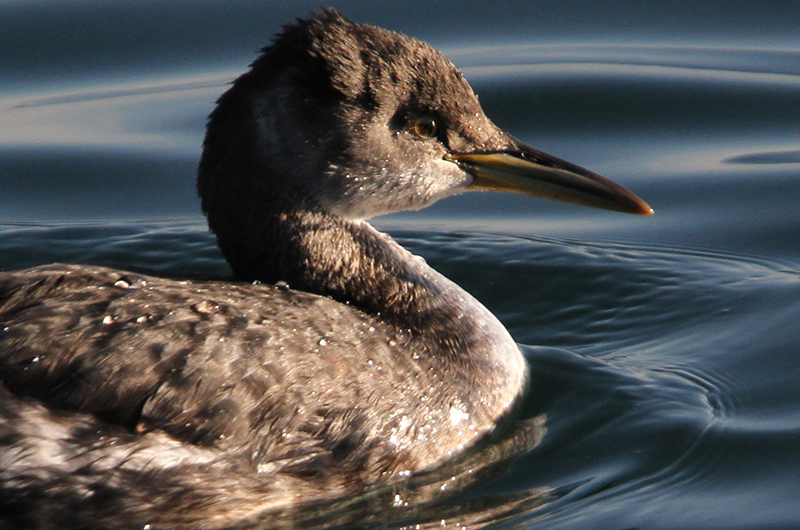Birds are starting to sing again, though the dawn chorus is still mostly quiet. There is a half an hour more daylight now than there was at the winter solstice, and increasing day length is often a trigger for birds to start singing. Warmer temperatures also influence their singing.
Many Carolina wrens across the Island never completely stopped singing this winter, although their vocal efforts are not as loud and frequent as they will be in a few months. I heard black-capped chickadees singing on a not-quite-so-cold morning around Jan. 10 and again on Jan. 26. The first song from a song sparrow was Jan. 25. Does the cooing of a mourning dove qualify as song? If yes, then I first heard them that same day. Hardly a dawn chorus yet, but you have to start somewhere, and the pleasure of hearing them singing helps the winter fly by.
Bird Sightings
A first year northern shrike was spotted by Stefan Martin at Lobsterville on Jan. 26. This species is a regular visitor from the north, but with only a few sightings each winter. By looks, this bird could be confused with a mockingbird, but shrikes have a fierce predatory habit of using thorns as dinner plates, impaling mice and small birds for dinner.
With the exception of the shrike, there was bound to be a down period after the excitement of incredibly unusual golden eagle and greater white-fronted goose sightings, and thus, there are not many sightings to report.
Adult bald eagle sightings are becoming a regular occurrence, as they (yes, more than one) have been around for at least the past month. Larry Hepler is the latest to find one on Jan. 20.
What is it this week about Lambert’s Cove Road attracting both birders and birds? Lanny McDowell spotted only the second red-breasted nuthatch of the winter on Jan. 25 at his house. That same day he also found a brightly colored palm warbler near Lambert’s Cove Road, as well as the yellow-breasted chat reported in last week’s column off Lambert’s Cove Road. Luanne Johnson spotted a gray catbird and white-throated sparrows at Pilot Hill Farm. And Jeff Peters birded that same road on Jan. 26, finding brown creeper, hairy woodpecker, Carolina wren, gray catbird and winter wren.
The next day, at Sepiessa Point, Lanny McDowell observed green-winged teal, a female common merganser, black duck and mallard. And Lisa Schibley scanned Vineyard Haven Harbor and found greater scaup, common goldeneye, red-necked grebe, common eider, surf scoter, and common loon.
Elsewhere on the waterbird front, I counted 151 brant (the highest count so far this winter) grazing heavily on the short grasses of Ocean Park in the middle of the day on Jan. 26. No brant were there exactly 24 hours earlier, and no Canada geese were there on either day, although on other days this month I have counted as many as 400 Canada geese there.
Why are there large differences in numbers from day to day? And why are brant even grazing on grass rather than on their preferred eelgrass, which grows in saltwater? I have started collecting data that will tell us whether the tidal cycle or the time of day affects the abundance of geese, but to get enough data I need your help. All you need to do when driving by Ocean Park is to stop for five minutes to count how many brant and how many Canada geese are there (a bird book and binoculars will help you to distinguish between these two species). Please record the date and time of your sightings, even if no geese or brant are present. Email me if you want a form to help you record these data. And thank you citizen scientists.
The first north-bound migrants will show up soon. Please report your sightings to birds@mvgazette.com.
Robert Culbert is an ecological consultant with Nature Watch LLC living in Vineyard Haven.






Comments
Comment policy »